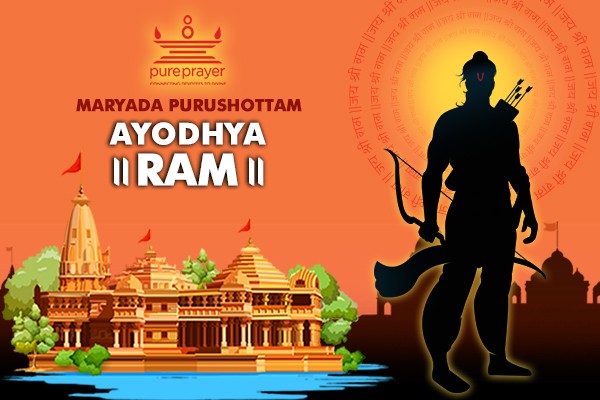Ayodhya | Ram | Mandir | Teerth Kshetra
Ayodhya and Ram are inseparable from each other. Sri Ram Mandir is being inaugurated in the Shri Ram Janmbhoomi Teerth kshetra of Ayodhya on 22nd of January, 2024 and dedicated to the entire world. The temple is built on the site believed to be the birthplace of Lord Ram, one of the most revered Hindu deities. The construction of the temple was undertaken by the Shri Ram Janmabhoomi Teerth Kshetra, a trust formed by the Indian government to oversee the construction of the temple.What Rama said about Ayodhya?
Valmiki Ramayan has a line in its poetry:|| जननी जन्मभूमिष्च स्वर्गादपि गरीयसि ||
|| ಜನನೀ ಜನ್ಮಭೂಮಿಷ್ಚ ಸ್ವರ್ಗಾದಪಿ ಗರೀಯಸಿ ||
|| Janani Janma Bhumishcha Swargadapi Gariyasi ||
This line tells everything about Lord Ram’s affection, love to his motherland, when Vibhishan asks him to stay back in the serendipitous land of Swarna Lanka. Ram Mandir is in the heart of the present day Ayodhya.Importance of Ayodhya as a Teertha Kshetra
Puranas mention seven most sacred Teertha Kshetras or places for pilgrimage, as a means of attaining Moksha. They are said to be: Ayodhya, Mathura, Maya, Kashi, Avanitka, Puri and Dvaravati. Names of some of these places have undergone change. The sacred places are also the equivalents of seven Chakras (Nadis) in one’s body. In order to attain Moksha, one has to realize these Chakras in body, beginning at the Muladhar. The Chakras in the body are: Muladhar, Swadhishthan, Manipura, Anahata, Vishuddha, Ajna and Sahasrar. Ayodhya, is the ancient Teertha Kshetra, representing the Manipura Chakra (also known as “City of jewels”). This Chakra can be realized behind the navel (Solar plexus) and associated with warmth. Ayodhya means, that which cannot be destroyed.Ayodhya kshetra as Manipura Chakra
Ayodhya, is the ancient Teertha Kshetra, representing the Manipura Chakra (In Sanskrit-मणिपूर चक्र). This is also interpreted as “City of jewels”. This Chakra can be realized behind the navel (Solar plexus) and associated with warmth. Ayodhya means, that which cannot be destroyed.Did you know the Srirangam & Shri Ram Connect?
Sri Ranganatha Swamy, the presiding Deity of Srirangam Kshetra, in Tamil Nadu is the Kula Devata of Ikshvaku Dynasty and Lord Shri Ram. This temple is the 2nd largest temple in Asia and biggest temple in Bharat currently. South India has always had connection with North India. Participate in Ram Mandir Temple Opening Special Abhishekam at Sri Sanjeevana Anjaneya Temple, Srirangam, Tamil Nadu on 22nd Jan, 2024, and receive the blessings of Ram Parivar. https://www.pureprayer.com/product/ram-mandir-opening-special-abhishekam/Valmiki Ramayan
Valmiki Ramayan or Valmiki Ramayanam is a Maha Kaavya dedicated to God Ram and Sita and is a much celebrated epic and is read by billions. Ramayan is today available in many languages apart from the original Sanskrit and available in many languages. There are many versions of Ramayana in Indian languages, besides Buddhist, and Jain adaptations. Cambodian (Reamker), Indonesian, Filipino, Thai (Ramakien), Lao, Burmese, Nepali, Maldivian, Cambodian, Vietnamese, Tibeto-Chinese, and Malay versions of the Ramayana are some of these. This apart, there are at least three hundred versions of Ramayan.Different names of Lord Ram
Ayodhya Ram, Dasharathi Rama, Kodandarama, Kausalyaram, Rama Chandra, Rama Bhadra, Sitaram, Raghavaram, Janaki-Rama, Ram-Lulla (Ram Lalla) are but a few of his names. Ramayan, a great epic that takes us through the journey of Life of Lord Ram, has glorified Sri Ram and Janma-Bhoomi, his birth place. It narrates the qualities of the “Maryada-Purushottama”, a title that well adorns Lord Ram. His commitment to keep his words, took him through the arduous journey of Vanavasa (Living in woods) for fourteen years. This was taken up as a part of “Dushta Shikshana Shishta Rakshana”, the inevitable act of ending the cruel the demon king Ravan or Dasha Kantha Ravan. Sri Ram returned victorious to Ayodhya on Vijay Dashami day, which is celebrated to this day in India.Ram Mandir - A Historic Milestone
In a moment that resonates with centuries of cultural and religious significance, the inauguration of the Ram Mandir in Ayodhya stands as a historic milestone, embodying the culmination of a long-standing cultural journey. Ram Mandir is not just a physical structure but a symbol of India's cultural heritage and the embodiment of the values and principles associated with Lord Ram, a revered figure. The temple's architecture, inspired by traditional Indian temple design, reflects a blend of spirituality and artistic craftsmanship. The construction process itself has become a symbol of resilience and determination, overcoming numerous obstacles and challenges. Shri Ram Janmbhoomi Temple in Ayodhya as the name indicates is the birth place of Lord Rama, one of the ten Avatars of Lord Vishnu on this earth. This is also regarded as one of the 108 Divyadesam Kshetras, that are visited by Vaishnavaites. A grand temple is being inaugurated at this temple complex with images of Rama, Sita, Lakshman, Bharat, Shatrughna and Hanuman being readied for consecration.Donate Online to Shri Ram Janmbhoomi Teerth kshetra
The Central Government has notified, “Shri Ram Janmbhoomi Teerth kshetra” (PAN: AAZTS6197B) to be place of historic importance and place of public worship of renown for the purposes of said section from the year F.Y. 2020-2021, vide (CBDT Notification No. 24/2020/F.No.176/8/2017/ITA-I).Donate Online using the link below:
| https://online.srjbtkshetra.org/#/mobileVerification |



